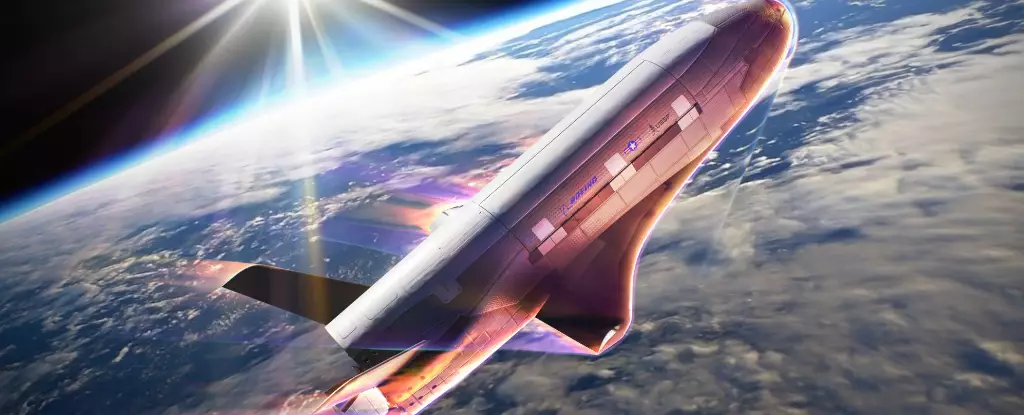The X-37B Orbital Test Vehicle (OTV), an innovative project initiated by Boeing and operated by the United States Space Force (USSF), has intrigued space enthusiasts and national security experts alike since its inaugural flight in 2011. This uncrewed and reusable spaceplane is engineered to operate within low Earth orbit (LEO), approximately 240 to 800 kilometers above our planet. With its recent mission known as OTV-7 launched on December 29, 2023, the X-37B has further solidified its reputation as a critical experimental platform, pushing the envelope of space technology and exploration.
The X-37B’s seventh mission encompasses a multifaceted array of experiments. Notably, it has focused on observing the repercussions of space radiation on various biological samples and refining Space Domain Awareness (SDA) technologies. This mission’s objectives are particularly significant because they align with the USSF’s long-term strategy for monitoring and securing space operations, reflecting an urgency to explore and utilize space while ensuring national security.
In a groundbreaking move, the X-37B will employ advanced aerobraking techniques to modify its orbit around Earth. This method allows the spacecraft to interact with the upper atmosphere, causing it to decelerate and adjust its path with minimal fuel expenditure. This innovative approach not only exemplifies remarkable engineering but also serves the strategic purpose of remaining elusive to potential adversaries, allowing for covert operations that can provide the USSF with a significant tactical advantage.
The aerobraking maneuver that the X-37B is set to perform is not merely the product of contemporary engineering efforts; it is a testament to decades of space exploration and technological advancement. The concept of aerobraking, which utilizes atmospheric friction to slow down or change the orbit of spacecraft, has been successfully implemented in various missions to Mars, including the Mars Global Surveyor and the Mars Reconnaissance Orbiter. Since the late 1990s, these techniques have proven essential for efficient spacecraft operations and have now found their application in the ambitious projects of the USSF.
U.S. Air Force Secretary Frank Kendall has applauded this upcoming maneuver, emphasizing its significance not just for the spacecraft but for the broader aspirations and innovations of the USSF. It marks a pivotal moment, indicating a mature leveraging of space technologies that could yield vast benefits in terms of both scientific discovery and strategic military operations.
The strategic implications of the X-37B’s capabilities are profound. As former U.S. Air Force Secretary Heather Wilson highlighted, the ability of the X-37B to execute unpredictable orbital paths creates significant challenges for adversaries attempting to track satellite positions. The aircraft’s capacity to operate under the radar—literally and figuratively—introduces new layers of complexity in terms of space surveillance and engagement.
Experts like Jonathan McDowell have pointed out how the unique maneuvering capability of the X-37B allows for a nuanced form of stealth within the space domain. This unpredictability not only disrupts enemy surveillance but also enhances mission performance, thereby strengthening the overall national security posture of the United States in an era of increased tensions in space.
Looking forward, the X-37B is set to conduct a series of experiments that extend beyond basic orbital maneuvers. One of the most intriguing facets of its current mission involves the “Seeds-2” experiment, aimed at studying the effects of space-based radiation on plant growth. This project could have lasting implications for future long-duration space missions, particularly in terms of sustaining life in extraterrestrial environments.
Through the execution of such experiments, the X-37B not only showcases its versatility as a test platform but also highlights the USSF’s commitment to advancing knowledge and technologies that could one day facilitate human presence beyond Earth. At its core, the ongoing series of missions underscore the need for robust research and innovation in space exploration, fostering developments that enhance our understanding of the challenges faced in this uncharted frontier.
The X-37B Orbital Test Vehicle stands as a symbol of innovative prowess and strategic foresight in the realm of space technology. As it embarks on its latest mission, the world watches with anticipation, knowing that each maneuver and experiment could redefine our approach to space, facilitating both scientific advancements and national security objectives. Through meticulous engineering and strategic vision, the X-37B is not just a tool of exploration but a significant player in the ongoing narrative of human endeavor in the cosmos.


Leave a Reply